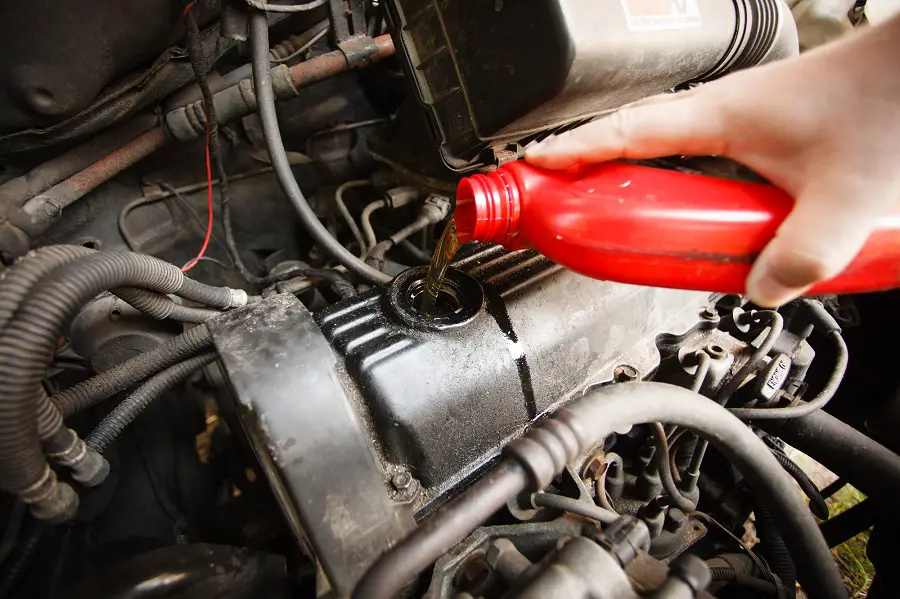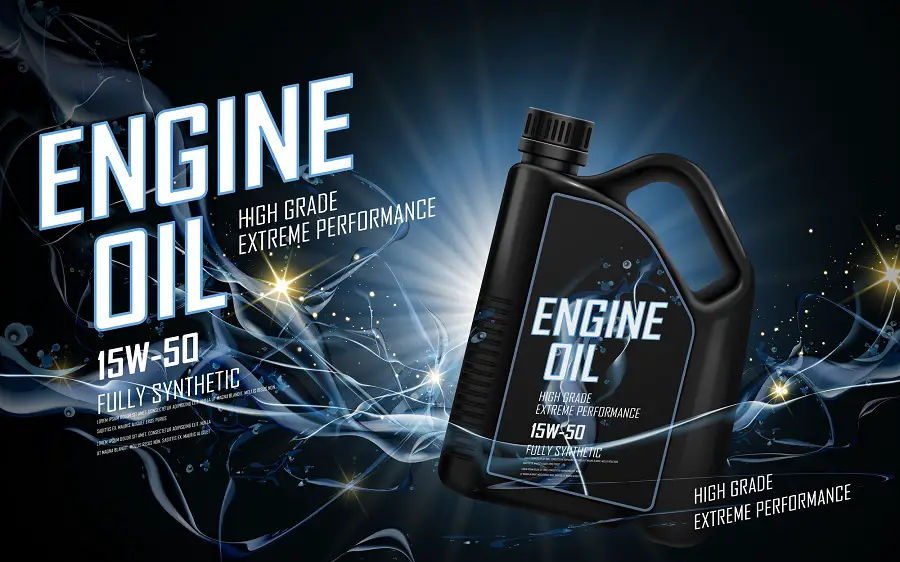Have you ever been really confident in your knowledge of something – even to the point of getting into an argument about it – only to find out that you were wrong?
This happened to me recently. I found out that I, the “batteries & oil guy”, was wrong about oil.
There’s a popular car guy on YouTube who insists on using diesel oil in all his cars. I got into a discussion about this with a friend. He asked why diesel oil would work better than any other oil.
I told him it was because of the weight, additives and viscosity.
He said that weight and viscosity were the same things. I said they weren’t.
So I had to set out to prove him wrong and in the process learned that I had been wrong about motor oil viscosity and what the numbers mean this whole time. It turns out that oil weight and viscosity are the same thing, they’re synonyms.
To put it succinctly, the numbers on motor oil refer to the properties of the oil when cold and at normal engine operating temperature. The lower the number before the “W” the less viscous (thinner or runnier) the oil at that temperature. The number following the W indicates the weight of the oil when hot. Oil “weight” refers to how thick/thin the oil is – which is the same as viscosity.

The lower the number, the “lighter” the weight and therefore the thinner the oil. This means that a light oil is less viscous (runnier).
In order to fully explain this, we need to have a deep discussion about slippery things and how they react to heat.
What Do the Numbers on Motor Oil Mean?
Whether you typically take your car to a professional shop or you change it yourself, I’m sure you’ve had to figure out which type of oil to use.
Beyond deciding between conventional and synthetic, you also need to pick out an oil grade. The numbers on the bottle, 5W-20 as an example, might as well be Greek if you’re not familiar with their nomenclature.
In simple terms, the numbers represent the viscosity of a particular oil. We’ll get into viscosity in the section below.
Most current oils are multi-weight or dual viscosity oils. The SAE assigns two numbers for the oil-based on the properties when cold and the properties when heated. The weight rating will be formatted as XW-XX where “X” is the numeric value assigned. We go into this deeper below.
The “W” stands for winter and this value indicates how the oil performs when exposed to cold temperatures. “Winter” is a substitute for how the oil reacts to the cold since that’s when it’s normally exposed to low temperatures.
The numbers after the W – and usually preceded by a dash – indicate how the oil acts when it’s at normal operating temp. This is defined as 100 °C (212 °F).
Unless you’re in an Engineering field or you love science in general, I’m guessing you haven’t studied viscosity in a while. In the next sections, I’ll break down what viscosity means and how to understand different levels for you.
What is Viscosity?
I’m a visual learner, so I want to help you understand viscosity by painting a picture. Imagine I’m pouring two different liquids out of their respective containers. The first is bottled water. The second is maple syrup.
Assuming they are both stored at room temperature, the water will flow out much faster than the maple syrup. Viscosity explains the difference in flow speed between the two substances. In a technical sense, it’s how flow-resistant any liquid is at a given temperature.
The viscosity of your motor oil has several practical implications for your automotive’s performance. It affects how well-sealed oil is within your engine, impacting the likelihood of leakage. The way your oil reacts to changes in temperature influences your vehicle’s rate of oil consumption.
It determines how easily it will be for your vehicle to start up, especially on cold winter days. Viscosity levels also influence your engine’s health.
Motor oil plays an integral part in ensuring your engine stays well-lubricated. The oil acts as a buffer between metallic parts grinding together and creating friction. If your oil lacks the proper viscosity level to withstand engine heat, your engine components will scrape against one another.
What is Oil Weight?
Oil weight refers to how well oil flows when exposed to a specific temperature. Each oil receives a viscosity number concerning how well it flows at different stages of heat testing.
The Society of Automotive Engineers (SAE) established a number system for grading the viscosity of motor oils. You can find comprehensive motor oil viscosity grading by referring to the Society of Automotive Engineer’s scale. When determining the viscosity of a specific oil, engineers assigned a number.
The higher the number, the heavier, or thicker, the oil. Larger numbers also indicate a more viscous fluid. The lower the number the lighter the oil.
The original viscosity grades were mono-grade – meaning they were just a single number. This number described the properties of standard motor oil (petroleum-based oils). I remember finding an old can of SAE 30 oil in my grandpa’s garage. This single number encompassed the total fluid properties of the oil at that time.
But that caused issues in cars in varying climates. To get the correct film thickness at operating temperatures oil manufacturers needed to start with a thick oil (because oil thins when heated). Because of this, it was harder to start engines in cold weather, as the oil was too thick.
As technology advanced, oil manufacturers were able to introduce oil additive technology that allowed oils to thin more slowly, allowing the selection of thinner base oils. The additives gave the oil “magical” properties (not really magic, just science) that made the oil act thin in colder temperatures and at startup. AND it made it thicken, or have thicker properties, once it heated up.
It’s kind of like the best of both worlds.
In order to explain these properties, SAE now assigns categories to oils by assigning an “XW” and “XX” value separated by a hyphen. 5W-30, for example.
The “XW” value refers to how the oil performs during the winter, using a zero degree day as the baseline. A lower number before the W indicates that the oil is more resistant to thickening in cold weather. In practical terms, motor oil with a lower number will flow through your car faster on a winter day.
The “XX” value refers to the oil’s resistance to thinning when exposed to high temperatures. In this case, oils with a higher number handle higher temperatures better. If you’re driving in the Summer or living in a warm region, you’ll want an oil with a higher secondary number.
Changes in modern engine technology have narrowed the ranges of oil viscosities on the market. However, it’s still worth considering where you’ll be using your vehicle when making your selection.
In general, you want to stick with 0W-20 or 5W-20 in colder climates. 15W-40 and 20W-50 oils are optimal for the Summertime.
Does it Matter What You Run in Your Car?
Viscosity plays a role in determining how your lubricant interacts with your vehicle’s engine. Your engine makes constant adjustments as you drive, exposing your oil to changes in temperature and pressure.
If you choose an oil with a viscosity level too low for your engine, you’re increasing the risk for engine harm. Wear and tear, excessive oil consumption, and leaks are a few possibilities.
On the flip side, oil with overly high viscosity levels presents its own array of problems. You might experience poorer fuel economy, acceleration of oil degradation, and difficulty starting your engine on winter days.
Different vehicles require different viscosities for optimal performance. Check your owner’s manual to determine which grading works best for your car. You can also check your Oil Filler Cap as a backup.
Your manual might list a single oil weight to use for all temperatures, or it may give you a more comprehensive array of grades from which to choose. The American Petroleum Institute has a guide based on vehicle age and type.
Currently, 5W-30 is the most widely recommended oil viscosity as it provides engine protection through a range of temperatures.
Is There a Difference Between Conventional and Synthetic Oil Weights?
All this conversation about oil weight and numbers caused me to wonder if the numbers on Synthetic Oil mean the same thing as the numbers on Conventional Oil.
“Conventional oil” is petroleum-based oil that is thick at low temperatures and thin at high temperatures. In all modern multi-grade oil (those with dual numeric designations, like 5W-30), additives are used by oil manufacturers to change the oil’s properties, such as reducing it’s viscosity and increasing its temperature resistance.
Synthetic oils are designed to match these specific types of conventional oil in viscosity and temperature properties.
When fresh, conventional motor oil has the same properties as its synthetic counterpart. But, with use, the additives break down and return the oil to its original consistency. The biggest difference between the two is that petroleum-based oil breaks down faster – synthetic is designed to be the same, just better.
Petroleum-based oils will break down faster when exposed to contaminants due to engine wear. While this is clearly a flaw in the conventional oils, and a sound reason for following the “3000 mile oil change interval” dogma, it created an opportunity in the market.
Even without additives, synthetic motor oil will not degrade or change viscosity over time. The only thing that may happen is that it can become slightly thicker from impurities and contaminants from the engine.
The same applies for full synthetic and synthetic blends – except that the blended oil will break down faster than the full synthetic motor oil. But both will wear better than conventional oil.
Can You Mix Viscosities?
The answer to this question gets somewhat complicated. If you combine two similar types of oil with different viscosities, you probably won’t cause any harm to your engine. However, there are several unknowns worth taking into consideration.
It boils down to this: you can mix different oil weights but do it sparingly – like if you need to top-off your oil in between oil changes. If you do have to mix oils with different weights, try and keep them in the same brand. Add Mobil 1 to Mobil 1 – or Pennzoil to Pennzoil. Otherwise, you run the risk of adverse reactions between brands’ additives & detergents.
We get into a lengthy discussion about this in another article where we asked if you can mix motor oil brands or weights. It’s a good read (in our humble opinion) but deserved its own article.






